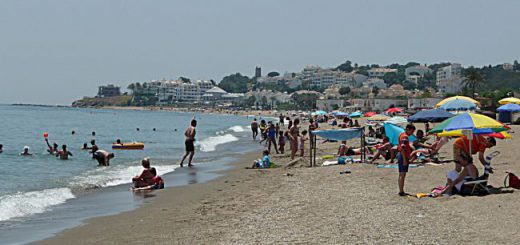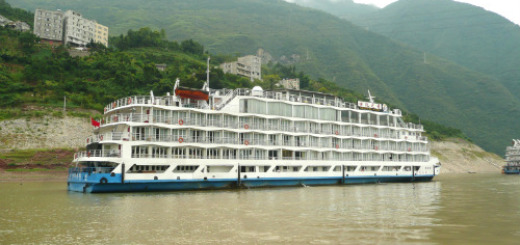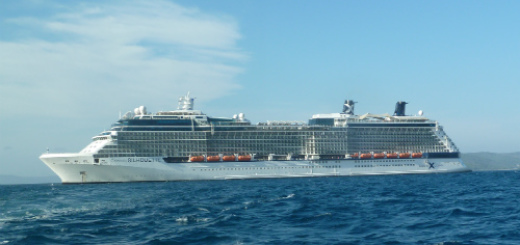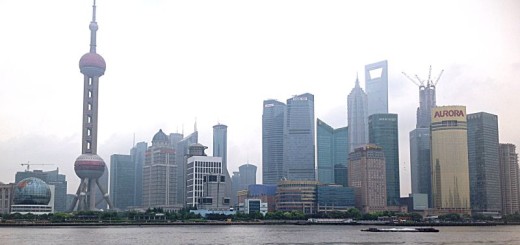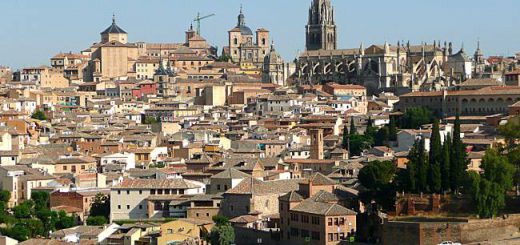The Royal City of Meknès

Meknès is one of the four Imperial cities of Morocco, yet it does not receive the same amount of tourism as other cities, being much smaller and quieter. It was founded in the 11th century, and became capital of Morocco under Sultan Moulay Ismail, one of Morocco’s most powerful rulers, in the 17th century. The importance of the city at that time is shown in the 45 km of exterior walls, 20 gates and over 50 palaces, together with the Sultan’s enormous royal stables, a military academy, vast granaries and an elaborate water storage cistern.
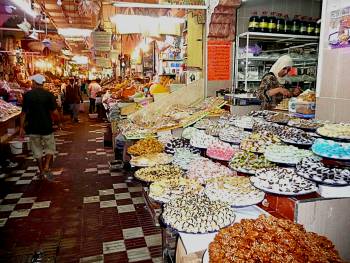
Meknès is made up of the old UNESCO World Heritage Site medina and the new ville nouvelle; two distinct centres about three kilometres apart. However that ancient labyrinth of narrow streets with its wonderful Moorish architecture and a multitude of craft workshops and stalls selling everything from food and spices to furniture and carpets was what we had come to explore.
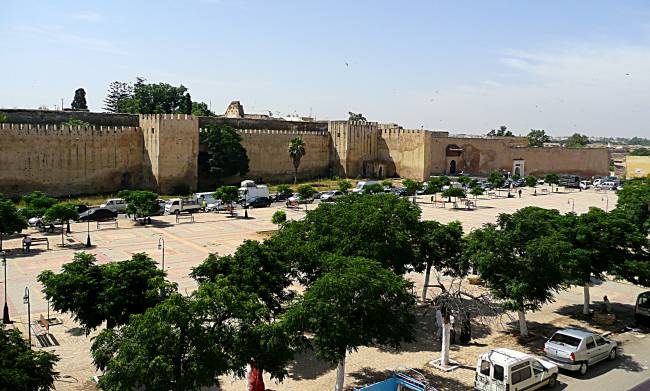
Our accommodation here was in the Riad Yacout on Place Lalla Aouda, a former Royal Guard parade ground, now redeveloped into a community space with gardens and fountains. From the roof terrace we had a great view over it to one of the city’s huge walls, with the minaret of Lalla Aouda Mosque behind. From there was only a short walk to most of the sights we had looked forward to seeing.

The riad itself was quite grand with the customary central courtyard complete with ornamental pool and a restaurant in one of the rooms to one side. It also had an attractive roof-top terrace for relaxing and taking in the views, and a Hammam which, unfortunately, we did not have time to use.

Bab Mansour is one of the enormous gates that mark the entrance to the old city through the fortified walls. This one is by far the most impressive and the most famous, resplendent in green and blue zellij and towering columns. The gate is no longer an access point, but the interior of the bab is used to house art exhibitions. There is a smaller gate to enter in order to go into the markets of the medina.
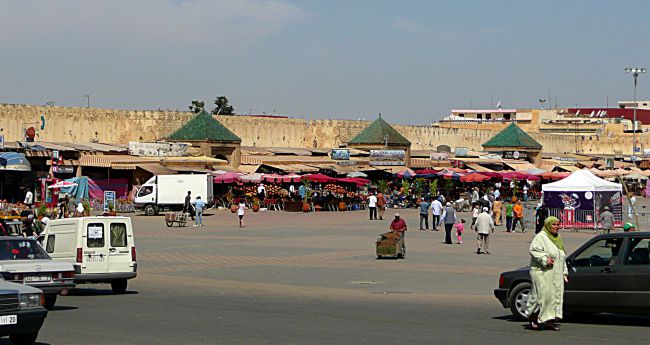
Bab Mansour faces onto Place El-Hedim, the main square in the old part of the city. Here you will see performers, musicians, story-tellers and snake charmers, while cafes, restaurants and produce stalls border the edges. While it is relatively quiet during the hot summer days, at night people flock to the square to eat, socialise and take in the performing acts.
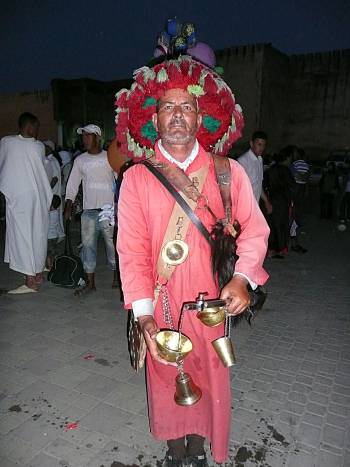
We were fascinated to see the traditional Water Seller, who goes around selling water by the cup full! The cup is made of copper which is supposed to be a natural antimicrobial substance, so maybe not so unhygienic, though I was not game to try, but a great photo subject.

Place El-Hedim was created during the construction of Moulay Ismail’s Royal Palace – Dar El Makhzen – which is nearby, as a place to store construction materials. It also became the place for public executions under his rule. The palace itself is not open to visitors as it is still used on occasion by the current ruler of Morocco, Mohammed VI. On one side of the palace walls is the Royal Golf Club of Meknès, a 9 hole course set with lush gardens and with the walls, roofs and minarets of the medina as a background. It even has lights for night games. Unfortunately hubby did not get to play there as the day we were there it was not open.
Near the palace are the old ruins of the Heri es Souani granary and stables which were used by the royal household. The Royal Stables must have been an amazing site, constructed to house no less that twelve thousand royal horses. Water from the cisterns below was channelled through the stables constantly, while granaries constructed with thick walls and ‘air-conditioning’ from the water allowed ideal storage for grain for the horse feed.

Another of Sultan Moulay Ismail’s construction projects was his Mausoleum. The entry gate has beautifully carved plaster work and wooden portico, with huge doors that have smaller ones for easier access. A series of pale-yellow courtyards lead to the sanctuary – completely renovated in the 1950s by King Mohammed V – in which the sultan was buried.

The anteroom to the tomb has walls with a series of levels consisting of exquisite zellij, enamel-painted wood, elaborately carved plaster, graceful arches, and marble columns. We were able to look through the doorway to the tomb, but non-Muslims are not allowed to enter.
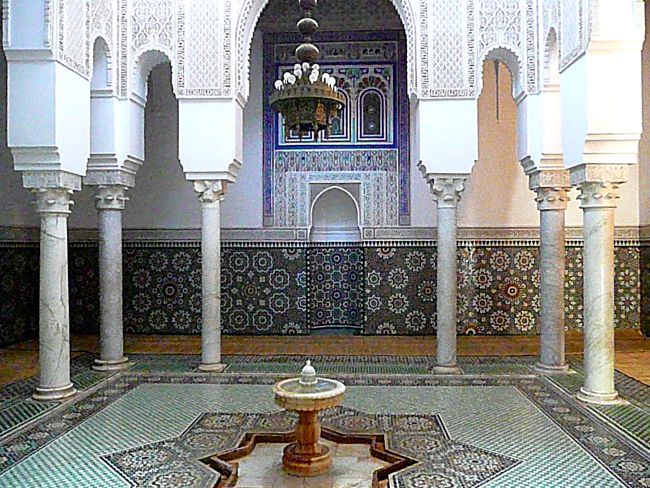
The same restriction is on the Grand Mosque, but the Bou Inania Medersa, opposite, is open to non-Muslims. This religious school was constructed at the same time as the one of the same name in Fes, in the 14th century. The building is centred around a single courtyard decorated in stucco finely detailed with carved calligraphy, carved olive wood, and a zellij floor.
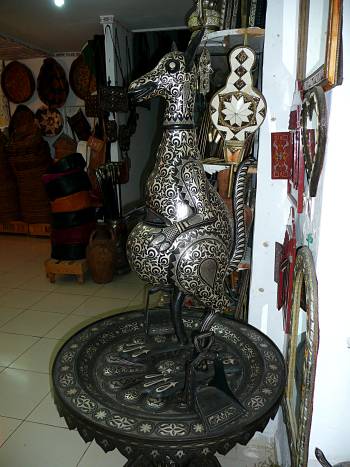
One of the handicrafts of Meknès is the production of damascene ornaments and tableware. The process involves etching the design lightly with a stylus-like tool on the steel surface of the chosen object. Silver wire is laid within the rough edges raised by the chasing or etching. This burr is then worked down to hold the inlay, forming a delicate and intricate pattern against the contrasting black background. Imagine our surprise to find a large figurine of a creature that resembled a kangaroo!
Most people stop over in Meknès simply to make a trip to Volubilis, Morocco’s most famous Roman site. We’ve seen more than our share of such sites over the last few years – you might say we have been ruin’d out – so we decided to give this a miss and concentrate on the charms of Meknès itself. Knowing we had yet to visit Rabat, Casablanca, Marrakech and Ouarzazate in the four days we had remaining, we needed to take it quietly!
Related articles
- Best of Morocco (Winter 2017-18) (telegraph.co.uk)
- 10 Places You Need to Visit in Morocco (travelogger.net)
- In Photographs: Cities of Morocco (pradaforbreakfast.wordpress.com)


